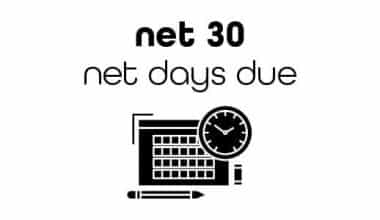When it comes to boosting communication flow within a business environment, listening is one of the most crucial interpersonal skills and abilities that both employees and employers must develop. However, the listening technique deployed is peculiar to the situation in question. For instance, when we want to impress and build rapport with others, we might practice a sort of listening that encourages the other person to trust and like us. The same applies to paying attention in a business place or during a meeting. We have to keep an open mind and avoid being swayed by prejudices or prior notions. There are various types of listening in communications. Let’s see how these relate to business communication.
What is Listening?
There was this time my niece and nephew came visiting. Those two are a bunch of fun and trouble. My parents entered their room and was telling them how Thanksgiving came about. They were mute till Dad finished and asked both of them to narrate the story. Your guess is as good as mine. You are imagining what happened, right? They both gave different versions of the same story. This implies that even though they were mute, they weren’t paying attention. By the way, they are all grown up now.
From that little drama between my niece, nephew, and my parents, I understood that keeping quiet when someone is speaking doesn’t mean you are paying attention. So that brings us to what this article is about- Listening. What is listening?
First, it’s a skill, a soft skill that people use to understand what others are saying. It’s actually more than just hearing sounds. It’s an active means of gathering, processing, and analyzing one’s ideas during communication. Listening is also consciously engaging one’s mind and senses in any form of oral and interpersonal conversation. Let’s get to the listening process before its types.
Listening Process
For active listening to take place, it must go through these pathways. These are receiving, understanding, recalling, evaluating, and feedback.
Types Of Listening In Communication
The following are the various types of listening as it relates to business communication;
#1. Active Listening
This is perhaps the most effective form of attentiveness. Paying active attention involves other kinds of attentiveness and the good news is that it can also be developed. It is consciously engaging in a conversation. It involves the following key processes which are paying keen attention; analyzing the information; comprehending; and reflecting back on what is said. While at it, you are not at any point expected to give your opinion unless it’s called for.
How Does it Relate to Business Communication?
With active attention to details, the listeners hear, understand, and assess what is being said. The speaker, on the other hand, is encouraged to continue and believes he is making sense of what he’s saying. It’s a strong foundation for successful communication, whether at work, at home, or in social settings.
#2. Informational Listening
If you are on the lookout for the various types of listening as it relates to business communication, then informational listening must be among the top 10. Generally, this type of listening is needed when we want to learn something new. When it comes to understanding, retaining, and recalling any new information, it demands a high level of attention and concentration. And if we do not deploy informational listening, recalling details after the information has been passed will be difficult. It can also occur in a classroom, coaching environment, reading reports, hearing the news, and so on.
How Does It Relate To Business Communication?
In relation to business communication, many employees receive instructions verbally and are expected to process them as well as produce results. Managers and supervisors will not have the time to go over every detail again as teachers do in schools. At this point, your attention-to-detail skills as well as your ability to process information quickly will be helpful. Trust me, informational listening is very vital as it reveals the ability to recall and memorize details. Anyone who masters this form of listening is usually a great learner, and this gives them the opportunity to become more valuable at work. Therefore, informational listening is one of the skills everyone must develop to ace their career.
#3. Partial listening
Almost everyone is a victim of the aftermath of partial listening. You were in a meeting and received an e-mail. Within seconds, you are sitting in the board room but your mind is fully focused on your phone; more like “body present and absent-minded”. Funny enough, you assume you are multi-tasking by paying attention to two things. But in reality, you can only attest to the fact that the speaker’s voice is very audible, but you can’t explain what he’s saying because you weren’t paying attention. Partial attention is a bit tricky because it’s fake yet appears real, because you can go ahead and give a nod and bodily response to the speaker; meanwhile, you weren’t paying attention. You may actually intend to listen to the person, but in reality, you are distracted by another thing.
How Does This Relate With Business Communication?
In terms of business communication, it prevents one from fully hearing the other person. Even though you may appear to use gestures to act like you were paying attention, it still changes nothing you’ll be unable to answer a question or follow instructions completely and precisely.
#4. Discriminative listening
Discriminative listening is also one of the most common types of listening in business communication. Everyone has a discriminative attention skill; we are all born with it. Although this is the most fundamental form of attention, it serves as the foundation for more conscious listening skills. It’s probably the first instinct in a child. It is the initial sort of listening you are born with. People with hearing impairment have an innate and physiological ability to participate in discriminative listening. When we listen in a discriminative manner, we distinguish between tones and sounds in order to determine how these distinctions may alter the overall meaning of a statement.
Apparently, it relies on the tone of voice, verbal signals, and other variations in sound rather than words. According to Lumen Learning, “Discriminative listening is a sort of focused and usually instrumental listening that is essentially physiological and occurs predominantly during the receiving stage of the listening process”.
How Does This Relate To Business Communication?
With discriminatory listening, we can scan and monitor our environment in order to isolate specific auditory or visual stimuli. When it’s honed and refined, it forms the foundation of others’ attentive listening in the business environment.
#5. False Listening
This one is actually deceptive. Unlike partial attention, you are fully aware that you aren’t paying attention. Yet you decide to make the speaker believe you were. It’s similar to partial listening, the key difference is that you were intentional about it. You occasionally respond with a body gesture or simply verbal feedback but the truth is, you were never paying attention.
How Does It Relate to Business Communication?
This style of listening may impair your capacity to perform well at work. You’ll lose track of vital points and won’t be effective at the task assigned to it.
#6. Critical Listening
Critical listening involves analyzing and evaluating information. Anyone who listens in a critical manner has a goal, and that’s to assess or evaluate the information being received at the time and not to take it at its face value. That is to detect if the speaker is trustworthy or not. It is critical because it involves your senses. I mean deep thinking. Secondly, you will have to decide what to do with it after the assessment.
Imagine believing everything you hear without assessing it and doing away with junk information or any information that doesn’t add to your value. Otherwise, we’ll become victims of fallacies. We also need to listen critically when dealing with a persuasive conversation.
How Does It Relate To Business Communication?
When it comes to problem-solving at work, critical listening is essential. For instance, you are faced with a difficult customer who, irrespective of your team’s effort, keeps proving to be a hard nut to crack. You’ll have to use critical listening and thinking to assess the customer’s grievances as well as encourage your team. Professionals and leaders also use it to conduct brainstorming sessions, develop new solutions, and debate tactics.
#7. Biased/ Selective listening
Biased or selective attention skills are also one of the types of listening skills in business communication. Imagine having a conversation with friends over lunch break. You weren’t interested in the conversation. Then, all of a sudden, you hear CR7’s name (if you’re a football ball lover) and you suddenly become interested in the conversation. Oh well, what you displayed right then was biased or selective listening. You only picked the information you wished to hear. It’s quite funny but then, everyone does this every now and then. Unfortunately, it’s actually not advisable if vital information is being passed across. This is because it results in distorted information.
How Does This Relate To Business Communication?
This listening style is actually not useful in the workplace. Unless it’s during the break period while chit-chat is ongoing among colleagues. You can’t possibly employ this mode of listening while a meeting is going on, or even while the manager is talking about a new project, or giving you instructions on how to draw a proposal. Vital information will be lost and depending on the importance of the information, severe actions may be taken against you.
#8. Empathetic Listening
Empathy has to do with understanding the thoughts or feelings of others. Empathetic listening isn’t different from the meaning of empathy. Lumen learning said it’s one of the most difficult types of listening or communication because it requires us to understand or experience what the speaker is thinking or experiencing. Aside from that, it’s quite easier to give our side of the story than to put ourselves in the shoes. It’s basically devoid of one’s reasoning, feelings, or reaction and carries the burden of another. This produces one result, sincerity.
How Does It Relate to Business Communication?
Empathetic listening build team spirit and oneness. In the workplace, you have a colleague who needs a listening ear and not your sympathy or opinion about their challenge. If you’re able to do this, you’ll successfully get them back on their feet and away from depression in record time.
#9. Comprehensive Listening
There’s this group that believes comprehensive is the same as informative when it comes to listening. The truth is that they differ. It’s one of the first sets of listening that are developed early in life. Think about a two-year-old trying to pay close attention to a Disney character and trying to make sense of the whole storyline. That’s comprehensive skill building. You basically need it to understand what others are saying.
How Does it Relate to Business Communication?
The process of learning begins with comprehension. You can as well say it’s easier to recall or retain information when you first comprehend it. In a workplace, people receive diverse information as it relates to the nature of their job. You need comprehensive listening to fully understand what’s being said at your workplace.
#10. Sympathetic Listening
When we employ sympathetic listening, we involve our emotions without the feelings of the person conversing with us. It doesn’t necessarily mean we understand what they are going through; it only means we release our feelings as a response to the situations that they are narrating.
How Does It Relate To Business Communication?
Within a business environment, sympathetic listening helps to build close relationships with colleagues. The speaker will feel they weren’t just wasting their time ranting about anything. They’ll also feel comforted and strengthened knowing you feel sorry for them.
#11. Appreciative Listening
When it comes to appreciative listening, the listener has a goal, more like he is itching for something, and once he hears it, he appreciates it. Imagine singing along with Jay Z and waiting for the rap section that you love so much. The listener always has a goal and immediately he finds a piece of information that’ll meet his needs, he appreciates it. It does involve past knowledge, experience, or perception. It is also very personal.
Categories of Listening Types
Listening types are categorized into two. These are effective and ineffective listening.
What are the 3 basic modes of listening?
There are three ways to listen effectively: attentive listening, responsive listening, and active listening. Your hearing acuity will improve and the likelihood of misunderstanding will be decreased if you comprehend these modes.
What are the 2 important types of listening?
Active listening and passive listening are the two different kinds of listening techniques. A person who listens actively is fully engaged in the conversation, eagerly absorbing all of its details and even contributing their own thoughts.
What are the 3 As of listening?
Three fundamental skills—attitude, attention, and adjustment—underlie the conscious activity of listening. Triple-A listening refers to these abilities as a whole.
What is active and passive listening?
Passive listening is a form of one-way communication in which the recipient does not offer comments or queries and may or may not comprehend the sender’s message. Responses that show you have been paying attention and comprehend what the other person is attempting to tell you about their experience are examples of active listening.
What is listening and its type?
In interpersonal communication, there are three primary listening styles that are most prevalent: Listening for Information (Listening to Learn) Critical Hearing (Listening to Evaluate and Analyse) Clinical or Empathetic Listening (Listening to Understand Feeling and Emotion)
What are the 5 importance of listening?
First, listening well can improve your academic performance. Second, listening well can make you a better communicator in your social interactions. Third, listening well can make you seem smarter to other people. Last but not least, good listening can make you a better public speaker.
What is called listening?
Paying attention to a sound or movement is known as listening. When one listens, they hear what others are saying and make an effort to decipher what they mean. Listening requires intricate emotive, cognitive, and behavioral processes.
What is active and empathic listening?
Empathic listening, which is also known as active listening or reflective listening, calls for consideration of the other person’s viewpoint. Giving support and encouragement rather than criticism or advise is one of the key characteristics of empathic listening.
What is importance of listening?
Listening not only helps you comprehend more and communicate more effectively, but it also makes it more pleasant for other people to speak to you.
Conclusion
Generally, we pay attention in different ways. We face different situations at the workplace, and each of these requires our attention skills. However, we must remember that it’s a skill that must be honed. Therefore, we must be intentional about every activity. When we do so, we become better at what we do and also deepen our relationships with others. Listening is part of communication. It’s also a skill that buttresses one’s professional prowess. Luckily, everyone can hone and fine-tune their listening skills. When this happens, there’s more productivity in the workplace. So just before wrapping things up, how many of these listening skills have you mastered? Use the comment section below, I’d love to hear from you.
Types Of Listening FAQs
Are there ineffective listenings in business comunication?
Yes, there are. Listening in a partial, false, and biased way are all examples of ineffective listening.
What re the four listening style?
People, action, content, and time
Related Articles
- Examples of empathy: 45+ Examples with empathy statements
- DOWNWARD COMMUNICATION: Meaning, Examples & Benefits
- Business Communication: How to develop an Effective Communication Strategy
- The Role of Communication Skills in a Business Environment
- UPWARD COMMUNICATION: Definition, Examples & How to Foster in a Workplace





